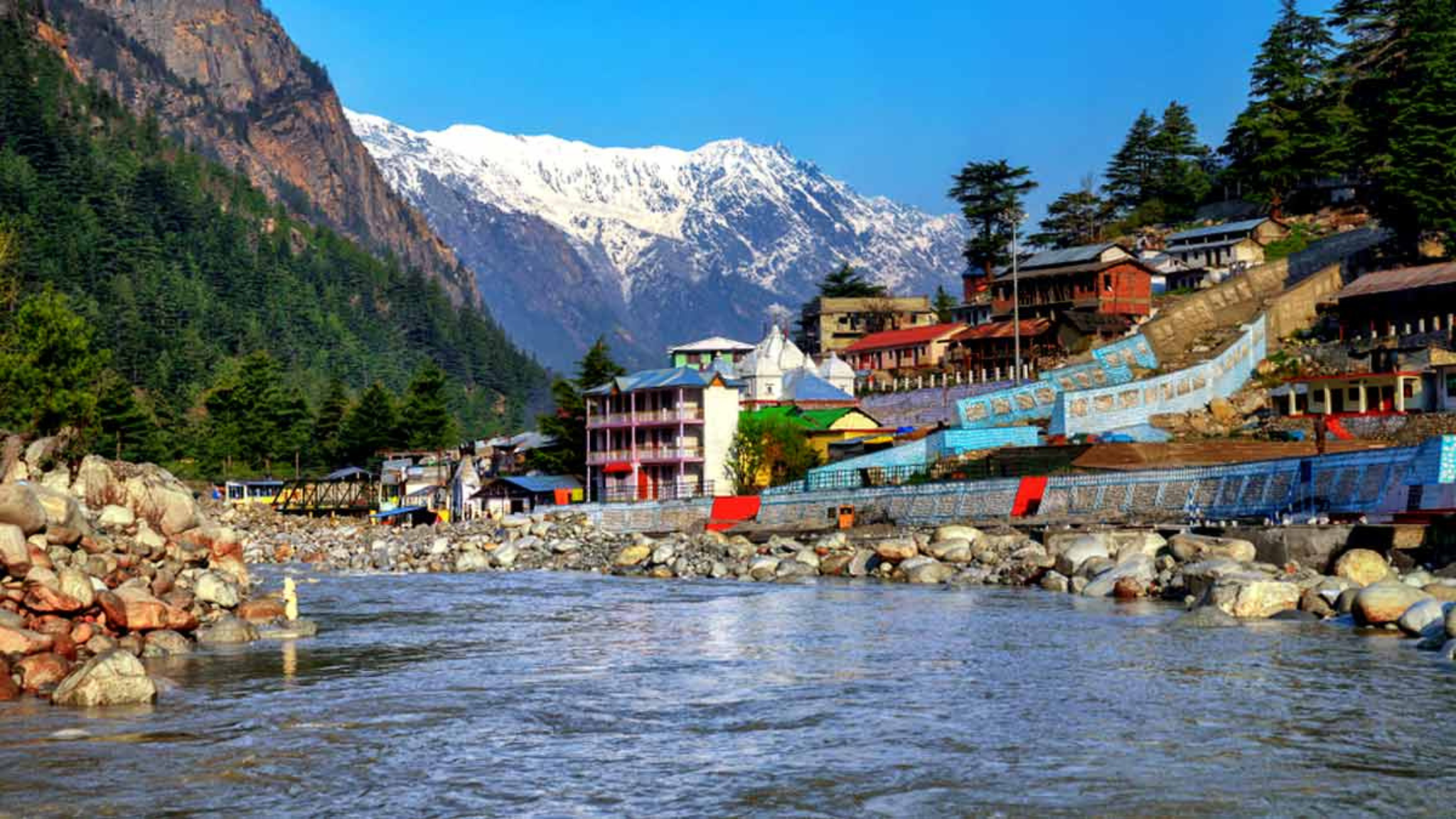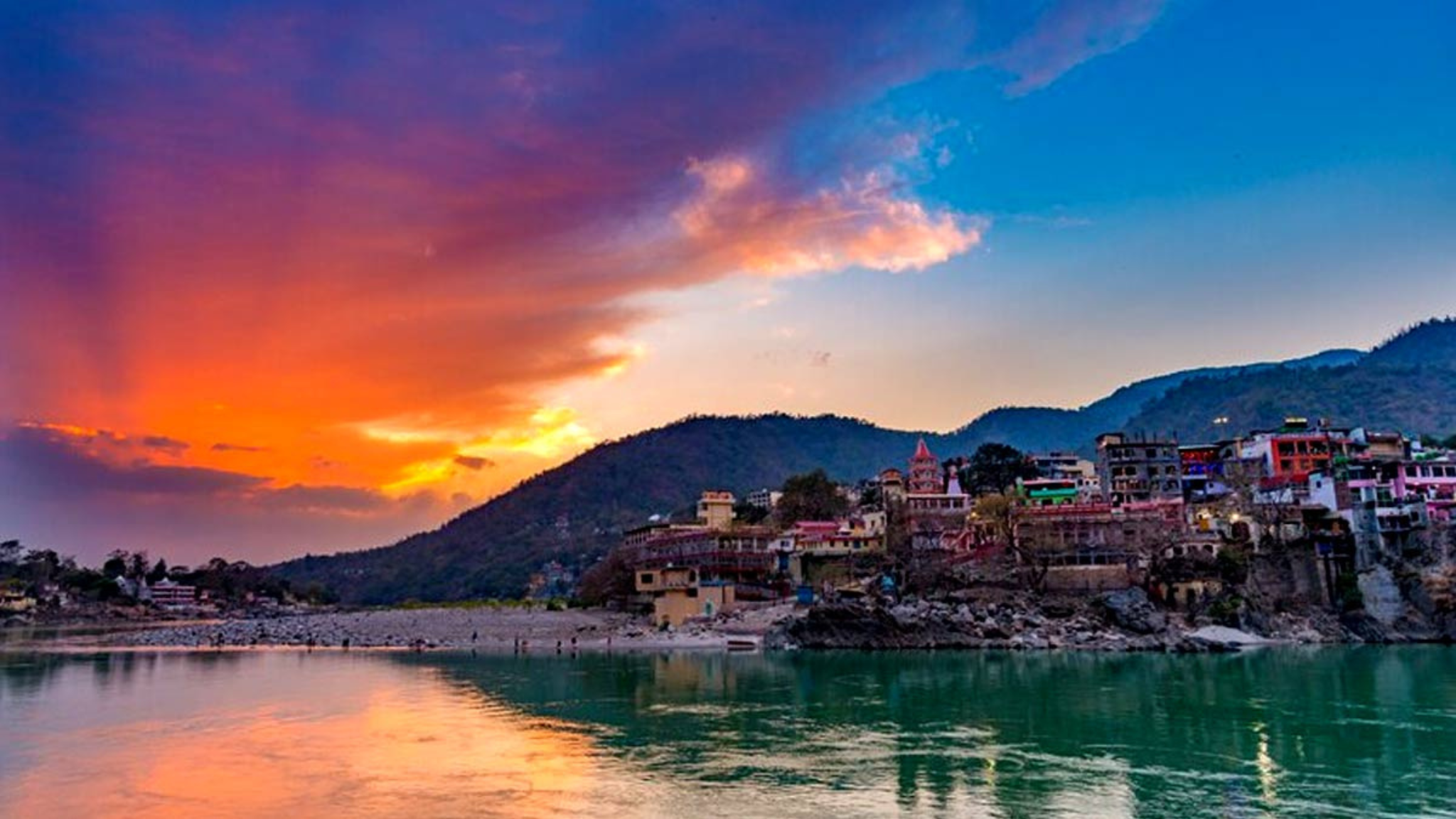In Hindu cosmology, the Ganga River stands as a sacred testament to celestial origins, descending from the ethereal strands of Lord Shiva. This article endeavours to unravel the mystique surrounding the source of the Ganga, delving into its mythological roots and offering a glimpse into its revered inception.
Mythical Intricacies
The sacred Ganga, embodying the divine flow of Goddess Ganga herself, materialized to foster humanity's flourishing. It is a river revered not only for its mythological significance but also for the perceived magical healing and medicinal properties attributed to its waters.
Origins Unveiled
Renowned Ayurvedic practitioner Dr. Robert Svoboda, distinguished as the first Westerner to graduate from an Ayurveda college, sheds light on the genesis of the Ganga. Devprayag emerges as the confluence point where the Bhagirathi and Alaknanda rivers merge, birthing the sacred waters of the Ganga. Bhagirathi, named after King Bhagirat, holds a celestial tale of bringing the Ganga from heavens to Earth.
Himalayan Genesis
The Bhagirathi and Alaknanda rivers, integral to the Ganga's formation, trace their origins to the Himalayas in Uttarakhand. Gomukh, where the Gangotri Glacier concludes, marks the source of the Bhagirathi River. The Alaknanda River forms as the Bhagirath Kharak Glacier and Satopanth Glacier waters intermingle.
Sacred Journey
Gomukh, with its crystal-clear waters, is often considered the symbolic source of the Ganga. As the river flows majestically, it becomes a vital component of India's expansive river system, eventually merging into the Bay of Bengal.
Mythological Narratives
Ancient Hindu texts, including the Ramayana, weave enchanting tales of the Ganga's celestial origins. Goddess Ganga, a heavenly water body, descended from the Himalayas. In another legend, Lord Vishnu's cosmic act led to the emergence of the Ganga from a divine toenail-dug hole.
Lord Shiva's Intervention
A captivating tale unfolds as Lord Shiva plays a pivotal role in regulating the celestial water's force. Ganga, residing in his hair bun, descended to Earth through a few locks. It is believed that Lord Shiva's controlled release prevents catastrophic consequences.
King Bhagiratha's Plea
King Bhagiratha's pursuit of bringing Ganga to Earth is met with divine challenges. Lord Brahma orders Ganga's descent, cautioning about the planet's readiness for the celestial waters. Seeking Lord Shiva's intervention, Ganga is intricately tied in his hair. Seven locks are released, transforming into the seven streams of the Ganga.

Profound Symbolism of Gangavataranam in Hinduism
Embodiment of Divine Shakti
The narrative of Gangavataranam holds profound symbolic significance within Hinduism. It serves as a metaphorical representation of the descent of Shakti, the Mother Goddess (Ganga), into the earthly realm, symbolizing the infusion of divine energy into the mind and body (earth). This descent signifies the liberation of the embodied soul from the burdens of past sins.
Flow of Divine Knowledge
Gangavataranam symbolically embodies the flow of divine knowledge, representing the enlightenment or knowledge of liberation (Ganga) into human consciousness (earth). This divine insight is facilitated by the grace of God (Shiva) and the dedicated efforts of enlightened masters, epitomized by Bhagiratha's austere endeavors.
Transmission of Sacred Wisdom
The narrative encompasses the transmission of sacred knowledge, particularly the Tantras, from Shiva to Parvathi. This signifies the divine bestowal of esoteric wisdom, emphasizing the spiritual teachings that guide and illuminate the path to liberation.
Householder's Duty to Ancestors
Bhagiratha's role as a householder represents the duty towards ancestors (Sagara’s sons). This element underlines the significance of familial responsibilities and the role of an individual within the broader context of ancestral reverence.
Life-Giving Rainwater Analogy
Gangavataranam draws a parallel to the life-giving essence of rainwater falling from the sky. This analogy signifies the divine descent transforming into a nourishing and life-giving stream or river, metaphorically representing the continuous cycle of life and rejuvenation.
Spiritual Instruction by the Enlightened
The narrative includes the theme of spiritual instruction, where the enlightened teacher (Shiva) imparts wisdom to the mortal world (student). This aspect reinforces the role of divine guidance and knowledge transfer as a transformative force in spiritual evolution.
Descent of the Soul
Gangavataranam further symbolizes the descent of the soul from the ancestral heaven during the process of rebirth. This journey, facilitated through rains, first into the male body (Shiva) and later into the female body (earth), underscores the cyclical nature of life and the interconnectedness of the spiritual and earthly realms.

The tradition of worshipping the Ganga and taking ceremonial dips to cleanse oneself of sins persists among the Hindus. It is believed that the Holy river will eventually cease to exist in the last era of Kali Yuga.
Source / Image Credit : Hindu Website , TemplePurohit, Herzindagi , Ganga Action Parivar
Mythical Intricacies
The sacred Ganga, embodying the divine flow of Goddess Ganga herself, materialized to foster humanity's flourishing. It is a river revered not only for its mythological significance but also for the perceived magical healing and medicinal properties attributed to its waters.
Origins Unveiled
Renowned Ayurvedic practitioner Dr. Robert Svoboda, distinguished as the first Westerner to graduate from an Ayurveda college, sheds light on the genesis of the Ganga. Devprayag emerges as the confluence point where the Bhagirathi and Alaknanda rivers merge, birthing the sacred waters of the Ganga. Bhagirathi, named after King Bhagirat, holds a celestial tale of bringing the Ganga from heavens to Earth.
Himalayan Genesis
The Bhagirathi and Alaknanda rivers, integral to the Ganga's formation, trace their origins to the Himalayas in Uttarakhand. Gomukh, where the Gangotri Glacier concludes, marks the source of the Bhagirathi River. The Alaknanda River forms as the Bhagirath Kharak Glacier and Satopanth Glacier waters intermingle.
Sacred Journey
Gomukh, with its crystal-clear waters, is often considered the symbolic source of the Ganga. As the river flows majestically, it becomes a vital component of India's expansive river system, eventually merging into the Bay of Bengal.
Mythological Narratives
Ancient Hindu texts, including the Ramayana, weave enchanting tales of the Ganga's celestial origins. Goddess Ganga, a heavenly water body, descended from the Himalayas. In another legend, Lord Vishnu's cosmic act led to the emergence of the Ganga from a divine toenail-dug hole.
Lord Shiva's Intervention
A captivating tale unfolds as Lord Shiva plays a pivotal role in regulating the celestial water's force. Ganga, residing in his hair bun, descended to Earth through a few locks. It is believed that Lord Shiva's controlled release prevents catastrophic consequences.
King Bhagiratha's Plea
King Bhagiratha's pursuit of bringing Ganga to Earth is met with divine challenges. Lord Brahma orders Ganga's descent, cautioning about the planet's readiness for the celestial waters. Seeking Lord Shiva's intervention, Ganga is intricately tied in his hair. Seven locks are released, transforming into the seven streams of the Ganga.

Profound Symbolism of Gangavataranam in Hinduism
Embodiment of Divine Shakti
The narrative of Gangavataranam holds profound symbolic significance within Hinduism. It serves as a metaphorical representation of the descent of Shakti, the Mother Goddess (Ganga), into the earthly realm, symbolizing the infusion of divine energy into the mind and body (earth). This descent signifies the liberation of the embodied soul from the burdens of past sins.
Flow of Divine Knowledge
Gangavataranam symbolically embodies the flow of divine knowledge, representing the enlightenment or knowledge of liberation (Ganga) into human consciousness (earth). This divine insight is facilitated by the grace of God (Shiva) and the dedicated efforts of enlightened masters, epitomized by Bhagiratha's austere endeavors.
Transmission of Sacred Wisdom
The narrative encompasses the transmission of sacred knowledge, particularly the Tantras, from Shiva to Parvathi. This signifies the divine bestowal of esoteric wisdom, emphasizing the spiritual teachings that guide and illuminate the path to liberation.
Householder's Duty to Ancestors
Bhagiratha's role as a householder represents the duty towards ancestors (Sagara’s sons). This element underlines the significance of familial responsibilities and the role of an individual within the broader context of ancestral reverence.
Life-Giving Rainwater Analogy
Gangavataranam draws a parallel to the life-giving essence of rainwater falling from the sky. This analogy signifies the divine descent transforming into a nourishing and life-giving stream or river, metaphorically representing the continuous cycle of life and rejuvenation.
Spiritual Instruction by the Enlightened
The narrative includes the theme of spiritual instruction, where the enlightened teacher (Shiva) imparts wisdom to the mortal world (student). This aspect reinforces the role of divine guidance and knowledge transfer as a transformative force in spiritual evolution.
Descent of the Soul
Gangavataranam further symbolizes the descent of the soul from the ancestral heaven during the process of rebirth. This journey, facilitated through rains, first into the male body (Shiva) and later into the female body (earth), underscores the cyclical nature of life and the interconnectedness of the spiritual and earthly realms.

The tradition of worshipping the Ganga and taking ceremonial dips to cleanse oneself of sins persists among the Hindus. It is believed that the Holy river will eventually cease to exist in the last era of Kali Yuga.
Source / Image Credit : Hindu Website , TemplePurohit, Herzindagi , Ganga Action Parivar







